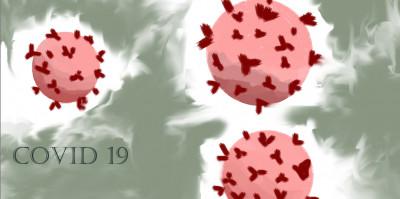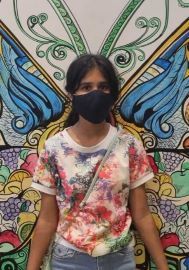The Germ Theory of Disease: What is it?

Tiny microorganisms are taking over our bodies and fighting their defences day by day. Every day, hundreds and millions of people get sick, and it’s been a mystery how we got ill. But one day, a man named Robert Koch came up with a brilliant theory on how germs entered and infected our bodies. This theory was named ‘The Germ Theory of Disease’ Because of this, we now know how germs and pathogens spread, And we also have learned to come up with cures and can determine how these diseases emerge.
Thinking of germs, the first thing that came into my mind when I heard this word was an image of cartoony-looking, blobbish creatures that had sharp little teeth pointing out of a crooked, tiny smile.

I didn’t know much about these little microorganisms until 3rd grade. They fascinated me, and I would ask 101 questions to a close family friend of mine, asking about germs and different diseases they cause. One thing that never came into my mind was to ask, “How do we get sick?”. I now know, and this wouldn’t have been found out without a very crucial discovery, and this discovery is called the Germ theory of disease.
The Germ theory of disease is the scientifically accepted theory on how diseases are spread. All medical students doing medicine will have to learn this as it is one of the basic theories all doctors should know. It was made or developed by these three men; Louis Pasteur (a French chemist and microbiologist), Joseph Lister (an English surgeon) and Robert Koch (a German physician) in 1861. There are four basic principles to Germ Theory.
In the olden days, people believed rotting debris created microbes and once touching the material caused it to spread. This itself is not half wrong, as touching infected objects will lead to us getting sick.
But in the Germ Theory, Robert Koch has proven that it is microbes that cause disease, rather than the object, and that tiny microorganisms live in the air.
The Germ Theory of disease has helped us develop medicine much further than before, learning that we can use and modify the bacteria and microbes infecting us, using its MNA, DNA, toxins and surface protein, or using a weakened form of the microbe. And this is called vaccination. Vaccines play an important role in the use of Germ Theory. Without the Germ Theory, vaccines would have never been made.
And as would have sterilisation ceased to exist without this important theory. Surgeons and nurses used to operate in bloody robes and would ’t even cover their hair whilst in the middle of surgery back in the 18th century. But now, learning about the Germ Theory, it became mandatory that all personnel performing surgery must sterilise themselves before starting and sterilise after finishing as well, for the wellbeing of the patient and doctor.
While talking about Germ Theory, one must highlight the ongoing, raging worldwide pandemic of Sars-CoV-2, more commonly known as COVID-19, or Coronavirus. The pandemic raged on for an entire year before a vaccine had been made. That vaccine was the fastest vaccine made in the history of humanity. Vaccines usually take 10 -15 years, and making a vaccine isn’t easy work. The terrain theory also has been taken into making guidelines for us to follow, such as avoiding touching objects outside and cleaning our houses frequently. It plays a very important role in the history of the theory as well.
Some people might say that we wouldn't need the Germ Theory, as most would agree that cleaning their surroundings is more logical than taking vaccines every two to three weeks would be. But still, remember. The terrain theory wouldn't have been made without the discovery of the Germ Theory, and we should all be thankful that our world can now be a safer place.
References
https://www.slideshare.net/MohammedazimBagban/germ-theory-of diseasespptx?qid=093990e9-102b-4afebd9c d826fac05c83&v=&b=&from_search=120220216_120407.docx
https://www.bbc.co.uk/bitesize/guides/zq8xk2p/revision/5
https://www.nature.com/articles/d42859-020-00007-6
Author biography
Aminath Ain Abdulla Rafeeu is a 13 year old girl, studying at Jamaluddin School. She and her twin sister Aan are two curious little cookies who wanted to know anything about everything. She enjoys reading and writing, aspiring to become an author when she grows up. Her favourite book series is the Sands of Arawiya Duology. She also likes Marvel, mythology, Shakespeare, and drawing and painting.

Cite this article as:
Aminath Ain Abdulla Rafeeu , The Germ Theory of Disease: What is it?, theCircle Composition, Volume 2, (2022). https://thecirclecomposition.org/the-germ-theory-of-disease/
